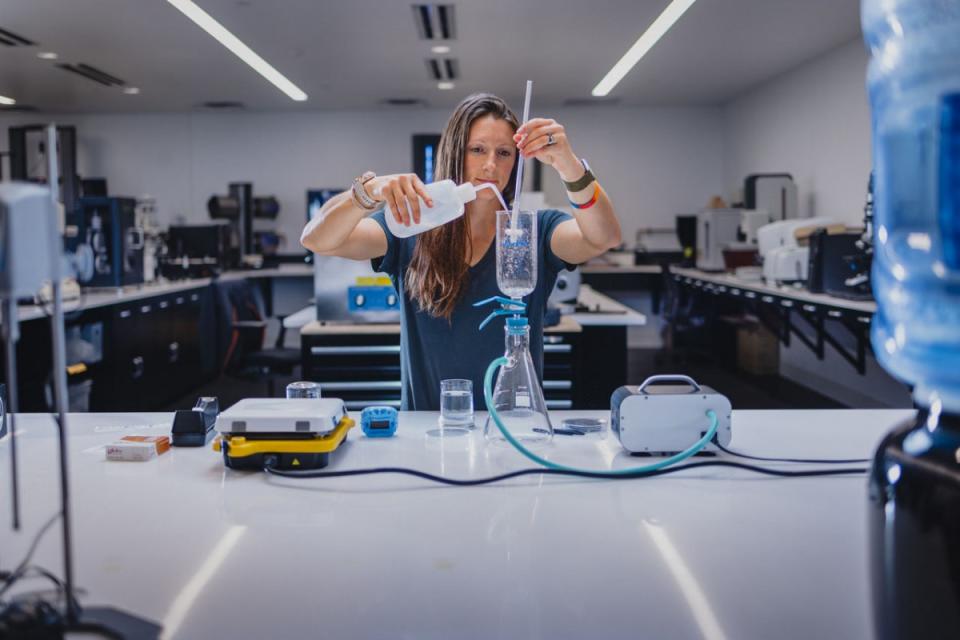Under Armour Offers Microfiber Shedding Test Kits to Textile Mills

Under Armour will soon be making available kits of its award-winning fiber-shed test method so industry players at large can better understand the pervasive microfiber pollution problem.
Working with James Heal, a precision testing solutions supplier, and with technical guidance from testing services provider Hohenstein, activewear brand Under Armour will make test kits publicly available, with complimentary tests going to high-volume textile mills in its global supply chain. The idea is to encourage early intervention among its closest collaborators to spread the word of how damaging micro-plastic pollution is to the environment and to people.
More from Sourcing Journal
“Until now, integrating fiber-shed testing into industry research and development activities has required a significant time and cost investment,” said Kyle Blakely, senior vice president of innovation for Under Armour. “We believe intervening early to mitigate shedding is critical which is why our test method is designed to specifically address these time and cost barriers to entry.”
James Heal will be providing Under Armour’s simplified, repeatable applications of the company’s break-through fiber-shed test method, which was launched earlier this year. The test has been optimized over the past eight months, and companies are now increasing access to the simple method of testing to all who contribute to the problem.
“Sustainability is a team sport, and we are thrilled to make this innovative measurement alternative widely available to the industry as we leverage across our own brand,” said Michael Levine, vice president and chief sustainability officer for Under Armour. “Our sustainability ambitions reflect our belief that what lies under our products matters.”
“As we progress toward our goal for 75 percent of products to be made of low shed materials by 2030,” he continued, “we will continue to pursue opportunities to magnify Under Armour’s impact in the collective fight against shedding.”
Microfiber shedding occurs during the manufacturing, wear and laundering of garments. If the small particles come from synthetic materials, they are microplastics and can prove harmful to the environment in addition to humans and animals if inhaled or ingested.

The first step in tackling microfiber shedding at its origins is measuring it, which is at the root of the company new testing method. The Baltimore firm and Steph Curry partner has developed a way to test the rate at which textiles release microfibers which it does at the beginning of product development so it can then pull or rework textiles that have a high propensity to shed.
Under Armour will use the data to help it develop textiles that are both comfortable and durable. It will make more textiles with less shed, using yarn formations and mechanical finishes that prevent fiber release.
The company’s goal is to have 75 percent of its fabrics made from low-shed materials by 2030. It is a signatory of Microfibre Consortium’s 2030 Commitment, the goal of which is to shrink the environmental impact of textile fiber fragments to zero. It is currently developing a reduced-shed version of its largest fleece range, to be launched in Fall/Winter 2024.
“Fiber-shedding in the textile industry is an extremely prevalent topic, and we are as keen as any to support ways to reduce this,” said Sam Tissington, commercial director at James Heal. “We are proud to support Under Armour in their attempts to further reduce the shedding of fiber throughout the manufacturing process of textiles, and to show that support we are providing global access to the Under Armour test method with the purchase of the Under Armour compiles Fiber-Shedding kits.”
Solve the daily Crossword

